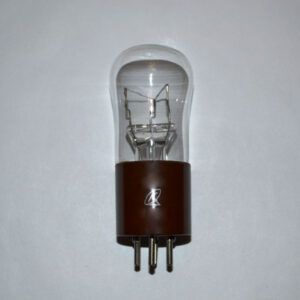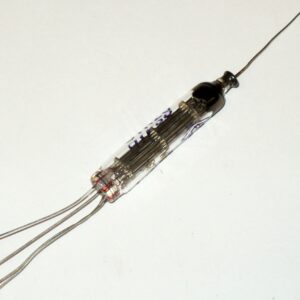decatron
The decatron is a two-pulse OG-4.
Countable for work in calculating and calculating-solving devices and for division
frequencies.The cathodes are cold and inactive.They work in any position.
The indication is made through the dome of the cylinder. The decoration is glass, with a base (RSH5-1).
The two-pulse decatron contains a disk anode, around which the cathodes are located,
divided into three groups: indicator cathodes, first subcathodes and second subcathodes.
The cathodes of the same name are connected in the device into cathode rings. One of the indicator cathodes
– the main one serves as an output electrode and has a separate output.
A positive voltage relative to the indicator cathodes is applied to the decatron anode,
and for the first subcathodes – a positive voltage of about 50 V.
In the initial position, a glow discharge exists between the anode and the main cathode.
The two-pulse decatron OG-4 is reversible: with its help, you can not only summarize,
but also subtract incoming pulses if the first pulse is fed into the chain of the second subcathodes,
and the second is in the chain of the first.
Basic parameters:
Conversion factor—10
Power supply voltage—425-475 V
Discharge voltage—< 375 V
Discharge maintenance voltage—130-170 V (according to some sources 125 V)
Bias voltage on the subcathodes—30-40 V
Reset pulse voltage amplitude—> 150 V
Reset pulse duration—> 10 microseconds
Ignition delay time—< 5 s
Operating current—0,3—0,45 mA
Control pulse data:
account speed*—0,01—2000 Hz
pulse amplitude—135-200 V
pulse duration—160-500 microseconds
duration of the front—10-30 microseconds
Operating time—> 2000 hours (according to some sources>500 hours)
Guaranteed shelf life—8 years
Color—orange-red
Weight—70g.
Maximum allowed parameters:
Current in the anode circuit—0.5 mA
Output voltage at the cathodes—15 V
Operating temperature range—-60 … +70°C (according to some sources up to +100°C)
* At a frequency of 1 Hz, decatron operation is allowed for no more than 2 hours, subject to subsequent operation at frequencies of 50 Hz and
above for an hour, and the total standing time of the discharge should not exceed 50 hours.











